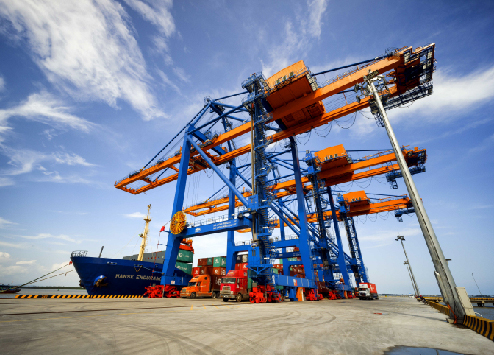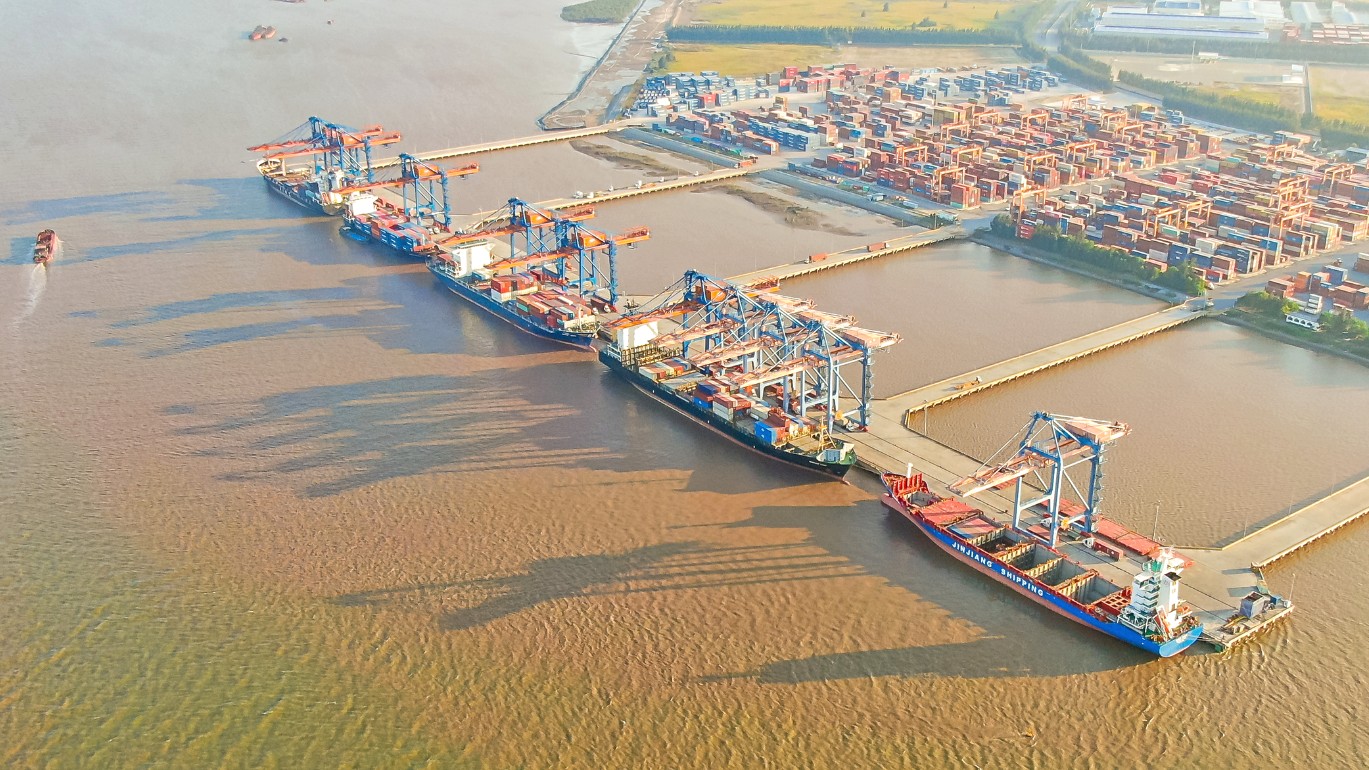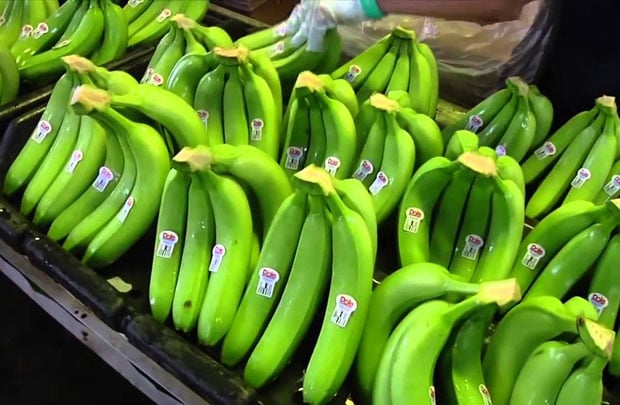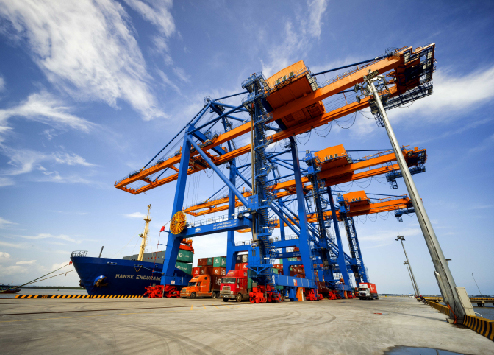The announcement of a 46% retaliatory tariff on Vietnamese goods by US President Donald Trump has been a hot topic in recent days. Businesses are awaiting the outcome of negotiations between the two governments.
Amid a stock market slump, with stocks of all sizes continuously falling since the US tariff announcement, leaders have stepped up to reassure partners, investors, and shareholders.
Masan, CII, HAGL, BAF, Gemadept, and Navico Respond
Ho Chi Minh City Infrastructure Investment Joint Stock Company (coded CII) stated:
Firstly, over 95% of CII’s current investment portfolio focuses on domestic infrastructure projects, including transportation and urban real estate developments.
Therefore, import-export tax policies, which mainly affect industries related to international trade, do not directly impact the company’s core business operations.
Secondly, CII does not currently have any USD-denominated loans, nor will it have any in the foreseeable future. As a result, risks associated with exchange rates or USD-denominated financial costs do not affect the company at present or in the near future.
Thirdly, CII’s operations continue to be positively supported by the government’s orientation towards synchronous infrastructure development and increased public investment.

In its initial assessment, Gemadept Joint Stock Company (coded GMD) acknowledged that the tariff increase could lead American businesses to seek alternative suppliers, disrupting Vietnamese enterprises’ current supply chains. As a result, it could have a certain impact on the company’s operations.
For the Nam Dinh Vu port cluster, goods destined for the US account for less than 10% of the total volume. This cluster mainly exports goods to the Inner Asian markets.

The company recognizes the growth potential of intra-Asian trade, further boosted as countries seek alternative markets and build more robust supply chains. Accordingly, Gemadept plans to increase the cluster’s total capacity to 2 million TEU by the end of this year, up from the current 1.3 million.
Regarding the Gemalink deep-water port, cargo to the US accounts for about 32% in 2024 and the first quarter of 2025. Since April, the company has attracted four new services to Africa, Europe, Canada, and Brazil, reducing the proportion of US-bound cargo to around 20%.
In contrast to the export flow, the import flow from the US may remain unaffected and even has the potential to grow due to Vietnam’s proactive policies to reduce taxes and increase purchases of strategic goods from the US.
Vietnam also has a high demand for renewable energy equipment, semiconductor technology, pharmaceuticals, high-tech machinery, raw materials, etc. This provides Gemadept with an opportunity to increase cargo volume from US imports, creating momentum for the deployment of Gemalink phase 2 in the coming time.
On April 8, a representative of Masan Group (coded MSN) stated that the proposed US tariffs would have a very limited impact on the group’s business operations and prospects.

Mr. Nguyen Dang Quang, Chairman of Masan Group
The US market contributes less than 1% to the revenue of Masan Consumer (coded MCH). Masan High-Tech Materials’ main products are currently exempt from the announced tariff measures.
Additionally, the prices of essential goods at WinCommerce remain competitive compared to all other channels in the market. And Vietnam has proposed a 0% tax rate for the US. This helps reduce raw material costs for the convenience food and meat industries and lowers production costs for businesses.
Masan focuses mainly on the domestic market, so the company is less directly affected by the new US tariff policies. However, the representative stated that they remain vigilant, closely monitoring the implementation of the tariffs and their potential impact on Vietnam’s consumer market.
At the same time, they are preparing business strategies, implementing flexible pricing strategies, closely following the actual situation, and structuring product portfolios appropriately to minimize any impact on consumer psychology.
Mr. Doan Nguyen Duc, Chairman of the Board of Directors of Hoang Anh Gia Lai Joint Stock Company (HAGL, coded HAG) also recently sent a letter to the company’s shareholders. In the letter, Mr. Doan Nguyen Duc shared his thoughts regarding President Donald Trump’s announcement of imposing high retaliatory tariffs on goods from several countries, including Vietnam.
The leader of HAGL affirmed that the tax policy mentioned by President Donald Trump does not affect the company’s main production and export activities. Specifically, the company’s banana products are mainly exported to China, South Korea, and Japan, and none of its products are exported to the US market.
Bầu Đức stated that he would continue to closely monitor international policy developments and proactively adjust business strategies when necessary to protect the company’s and shareholders’ interests.

On behalf of the livestock industry, BAF Vietnam Agricultural Joint Stock Company (coded BAF) informed that corn and soybeans currently account for 65% of BAF’s animal feed production costs, with the main source of import being the US. At the same time, animal feed accounts for up to 60% of the cost of pig farming. Accordingly, reducing the import tax on corn and soybean meal to 0% means lower prices, thereby significantly reducing production costs for the company.
Wood Enterprises Shift Focus to the Domestic Market
Wood is one of Vietnam’s billion-dollar export industries to the US market. According to the Wood Association, one of the solutions for businesses in the coming time is to focus on the domestic market. Currently, some enterprises are shifting their production and consumption to the domestic market to reduce their dependence on exports.
At the same time, companies are seeking new markets in regions other than the US, such as Europe, Japan, Australia, the Middle East, and Canada.
In terms of production, to preserve cash flow, enterprises are proactively cutting costs and improving production efficiency, as well as seeking cheaper sources of raw materials.
Enterprises also proposed that the Government promote trade and diversify markets so that they can find alternative markets such as the Middle East, Africa, India, Europe, and other regions by participating in international fairs and exhibitions to promote products and connect with new customers.
Garment and Textile Enterprises Are Well Prepared
Mr. Vu Duc Giang, Chairman of the Vietnam Textile and Apparel Association (VITAS), said that Vietnam would be directly and indirectly affected, as the country is developing its economy globally and diversifying its partners and customers.
According to Mr. Giang, there are three issues to consider:
First: The relations between major countries such as the US and China will affect Vietnam’s supply shortage. In particular, we should pay attention to the fact that our supply is currently dependent on China;
Second: This is a lesson for us to quickly find a way to solve the problem of market diversification and not depend too much on any large market;
Finally: By following Mr. Trump’s moves, we can understand his approach and methods, assess the markets, and find ways to avoid the “tariff trap.”
In terms of market performance, in the first two months of 2025, the entire textile and garment industry exported over $5.63 billion worth of goods, up 9.3% compared to the same period last year. Mr. Giang expected that in March, the industry would reach an additional $4 billion in export turnover. “I look forward to the third and fourth quarters, as they are the winter-spring season and the preparation for the year-end holidays. In 2025, the industry will definitely achieve its goals,” he said.
Despite the challenges posed by the US market, the textile and garment industry still has many prospects this year, specifically:
+ Vietnam’s 54 large textile and garment enterprises are presented with opportunities from the promotion of free trade agreements. Notably, the Ministry of Industry and Trade recently announced plans to sign a few more agreements to bring the total number of new free trade agreements to 22 for 2025;
+ The textile and garment industry is promoting its development through the application of technology, AI, etc., thereby creating new momentum.
VASEP Recommends Seafood Enterprises to Consider Exporting to the US; Logistics Group Has a Quick Reaction Team
Regarding seafood enterprises, the latest dispatch from VASEP stated that with an annual export turnover of about $2 billion to the US, accounting for one-fifth of Vietnam’s total seafood export value, this market is not only the largest but also has a high orientation for the Vietnamese seafood industry.
During the negotiation process, VASEP recommends that member seafood enterprises carefully consider the timing and plans for exporting goods to the US to avoid unexpected tax rates. Specifically, they should avoid exporting goods from April 5, 2025, to avoid an additional 10% tax and not export goods from April 9, 2025, to avoid the 46% retaliatory tax.
In another development, many large enterprises have already diversified their markets. For example, Nam Viet Seafood reported that the US is no longer their main market, and they are now exporting heavily to China, the Middle East, Brazil, and other countries.
Immediately after the Prime Minister requested the establishment of a quick reaction team to receive feedback from enterprises, especially large exporting enterprises, the Vietnam Logistics Association (VLA) decided to form the VLA Quick Reaction Team on Retaliatory Tax (VLA-TRT). The team consists of the association’s leaders, specialized departments, and key enterprises to handle this special situation. Through this team, VLA proposed to the Prime Minister to quickly assess and announce the list of industries at high risk.
Assessment of Impact by Securities Companies
Dragon Capital’s early April report found that 20 listed companies affected by the retaliatory tariff have a combined market capitalization of nearly $12 billion as of the end of 2024, with an estimated revenue of over VND323.5 trillion in 2024. Of this, exports to the US account for more than VND45 trillion, or 14% of total revenue. These enterprises account for about 5.5% of the capitalization and 2% of the revenue of the entire VN-Index. Industries such as textiles, rubber, tires, wood, consumer goods, and food are heavily impacted due to their high proportion of exports to the US in total revenue.
VCBS’s rapid assessment report, released on April 8, also evaluated the impact of tariffs on 100 enterprises in 17 industries. Accordingly, the garment industry, such as TCM, has a diverse export market, with over 70% coming from Asia, and the proportion of exports to the US has been decreasing in recent years, was assessed to be severely negatively affected. TNG is in a similar situation, with a high proportion of revenue from exports to the US.
The $1 Billion Airport Redevelopment: A Sun Group and Mobile Police Command Collaboration
“With unwavering dedication and expertise, Sun Group Corporation, as the main contractor, assures the completion of the airport within a remarkable 12-month timeframe.”
The Seafood Savior: A Chairman’s Vow to Rescue Shareholders
“While Nam Viet has a presence in the US market, it does not consider it a primary focus. Instead, the company’s key markets lie in China, the Middle East, Brazil, Asia, Mexico, and other regions. These markets form the backbone of Nam Viet’s business, with a strong emphasis on international expansion and a diverse customer base.”





















